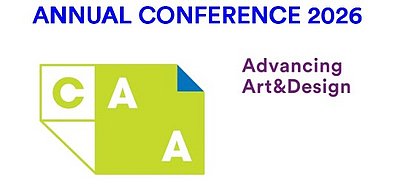Welcome at the Interface Culture program website.
Acting as creative artists and researchers, students learn how to advance the state of the art of current interface technologies and applications. Through interdisciplinary research and team work, they also develop new aspects of interface design including its cultural and social applications. The themes elaborated under the Master's programme in relation to interactive technologies include Interactive Environments, Interactive Art, Ubiquitous Computing, game design, VR and MR environments, Sound Art, Media Art, Web-Art, Software Art, HCI research and interaction design.

The Interface Culture program at the Linz University of Arts Department of Media was founded in 2004 by Christa Sommerer and Laurent Mignonneau. The program teaches students of human-machine interaction to develop innovative interfaces that harness new interface technologies at the confluence of art, research, application and design, and to investigate the cultural and social possibilities of implementing them.
The term "interface" is omnipresent nowadays. Basically, it describes an intersection or linkage between different computer systems that makes use of hardware components and software programs to enable the exchange and transmission of digital information via communications protocols.
However, an interface also describes the hook-up between human and machine, whereby the human qua user undertakes interaction as a means of operating and influencing the software and hardware components of a digital system. An interface thus enables human beings to communicate with digital technologies as well as to generate, receive and exchange data. Examples of interfaces in very widespread use are the mouse-keyboard interface and graphical user interfaces (i.e. desktop metaphors). In recent years, though, we have witnessed rapid developments in the direction of more intuitive and more seamless interface designs; the fields of research that have emerged include ubiquitous computing, intelligent environments, tangible user interfaces, auditory interfaces, VR-based and MR-based interaction, multi-modal interaction (camera-based interaction, voice-driven interaction, gesture-based interaction), robotic interfaces, natural interfaces and artistic and metaphoric interfaces.
Artists in the field of interactive art have been conducting research on human-machine interaction for a number of years now. By means of artistic, intuitive, conceptual, social and critical forms of interaction design, they have shown how digital processes can become essential elements of the artistic process.
Ars Electronica and in particular the Prix Ars Electronica's Interactive Art category launched in 1991 has had a powerful impact on this dialog and played an active role in promoting ongoing development in this field of research.
The Interface Cultures program is based upon this know-how. It is an artistic-scientific course of study to give budding media artists and media theoreticians solid training in creative and innovative interface design. Artistic design in these areas includes interactive art, netart, software art, robotic art, soundart, noiseart, games & storytelling and mobile art, as well as new hybrid fields like genetic art, bioart, spaceart and nanoart.
It is precisely this combination of technical know-how, interdisciplinary research and a creative artistic-scientific approach to a task that makes it possible to develop new, creative interfaces that engender progressive and innovative artistic-creative applications for media art, media design, media research and communication.
The Image Tactics of Black Holes: Moving Photographs Beyond Data
Februar 2026 College Art Association New York
Beteiligung an der Konferenz von Eszter Polony, Universitätsassistentin / Abteilung Kunstgeschichte und Kunsttheorie.
Panel Title: (Methodological) Black Holes in Photography
By most counts, the image published by the Event Horizon Telescope of a black hole is not a photograph. Part of what has made black holes undiscoverable, beyond their being at twenty-six thousand light years from Earth is that they are understood to swallow rather than emanate light, with patterns in light’s absence making them discoverable. What makes the black hole photograph an image at all might be an equally pressing question, given that the volume of data transmission their observation requires, currently assessed at sixty-four gigabits per second at speeds that exceed earlier interferometric systems ninety-thousand-fold. The black hole photo is not just of a theoretically hyperbolic object, it also is a supermassive entity itself—of data. Drawing on the so-called Beckenstein entropy bound on information, according to which the maximum amount of data that can be put in a volume is framed in terms of a black hole, this paper considers black holes as expanding the imaginary of data to off-world frontiers in response to a crisis in both the perceived sustainability of data and its intelligibility to human perception. It looks at work by artists seeking to subvert data-saturated systems by targeting their inner propensities toward forgetting, rot, and decay, such as Hito Steyerl’s notion of impoverished images, Linda Dounia Rebeiz’s synthesis of non-existent memories, and Mimi Ọnụọha’s filling of “blank [sic] holes” with missing data. Black holes are thus presented as both hyperbolic and tactical in image theory.
